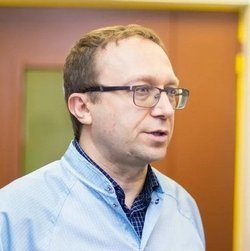Statistical error? Federal and regional data on COVID-19 victims is two times different
Scandalous discrepancies have been found between the coronavirus death statistics collected by the Tatarstan Ministry of Health Care and the data of the official all-Russian monitoring stopcoronavirus.rf. As Realnoe Vremya has learnt, according to the information spread by the federal centre, 56 people died from coronavirus in the republic from 1 to 22 October, while according to local data — almost twice less. However, the total number of victims of the infection is almost identical.
Numbers don’t match
According to Tatarstan’s Ministry of Health Care, 105 deaths from COVID-19 were confirmed by 22 October morning in the republic, 29 of them were in October. While according to the data of the official website stopcoronavirus.rf, 56 Tatarstan residents died in October, that’s to say, twice more. At the same time, it remains a mystery how just 104 patients have died in Tatarstan since the beginning of the pandemic according to the all-Russian site, while the local taskforce already has 105.
We also see a significant difference between the data that the task force daily makes public and stopcoronavirus.rf publishes. Local health workers publish news about one or two deaths almost daily. And the federal website shows a sudden rise in deaths from 13 to 18 October. In six days, according to the “Russian” version, 36 patients died — 5-7 people died a day. The “Tatarstan” version suggests that just eight COVID-19 patients died during the same period. The biggest number of deaths on stopcoronavirus.rf was on 15 and 17 October — 7 people died each day. Does it mean that Tatarstan is hiding real deaths? But it would be senseless because the information is daily published on the all-Russian website. The case is probably that how and what for information about deaths is provided.
Slow calculation method
Tatarstan, as the republican Ministry of Health Care and task force explained earlier, publishes data only about confirmed cases of death from coronavirus. And they are considered confirmed only if there is a “positive” report after autopsy. Tatarstan Vice Minister of Health Care Almir Abashev told journalists about this as early as in summer. Corpses aren’t always performed an autopsy on the day of death. So it takes a day or two or three to do an autopsy on the body, examine biomaterial and legalise the document.
However, there is a question, how does then stopcoronavirus.rf receives information about victims on the same day? It is thought then: as a consequence of the order described by Almir Abashev, tragic news about deaths from coronavirus spread through the calendar. You might agree that one or two deaths a day during the month look natural, excuse me for the cynicism. Yes, mainly old and very old patients with a bunch of chronic diseases that impeded them from fighting off COVID-19 pneumonia. It is the sad but inevitable reality.
Another thing is when 13 October became a bad day for six patients with this pneumonia, 14 October wasn’t a good day for 5 patients, 15 October — for 7. The upsurge in the number of deaths in six days is an alarming factor. And the Tatarstan anti-coronavirus task force is using this approach is a dose of information quite consciously — not to scare the people in vain.
“Several corpses every day”
However, it seems that one should be afraid of another thing. A Kazan pathologist told Realnoe Vremya’s correspondent on condition of anonymity that the number of patients who died from coronavirus in April-May 2020 exceeded the official statistics ten times.
“Every day we did an autopsy on several corpses of this kind, worked in hazmat suits, gave relatives the bodies wrapped in films that one can’t take off. While in officials documents we indicated other causes of death, and it is objective. People don’t die from the virus but from complications.”
It is unlikely something has changed now. Moreover, if this is the real picture of the disease in Tatarstan, it is unlikely to be different in Russia: the method of registering deaths in the country is the same.
And how to count?
On the one hand, how accurate are the statistics based on not complete data?
Because, first of all, not all patients viral respiratory infections do a test for COVID-19, a doctor decides it. In the absence of characteristics of the coronavirus infection, the test isn’t prescribed. This is why the real level of infection of COVID-19 among both Tatarstan residents and Russians in general is unknown.
Neither is known the real rate of deaths from COVID-19. The mass media have repeatedly published health workers’ explanations that if a patient infected with coronavirus died but the virus wasn’t found in his lungs, this death isn’t considered by the COVID-19 statistics. Though logically, he could be alive if not the virus that complicated the course of chronic disease. And according to data published in public sources, in some countries, for instance, in Belgium all deaths are included in the coronavirus statistics, including patients who were simply suspected of having coronavirus.
Perhaps, as a result of such different approaches, according to the official data the coronavirus mortality rate in Russia has been 1,7% today, while around the world it is 2,7%, the WHO suggests.
“Corrections are inevitable”

Do you think the difference after the correction will go up or down?
I am sure it will increase. One shouldn’t comfort oneself with the fact that the mortality rate from the novel coronavirus infection is significantly lower than the mortality rate from the seasonal flu. This is true in fact, but we are dealing with the artful virus infection.
What should we do with the anonymous information from the medical examiners that about 300 autopsies of corpses infected with coronavirus were done in Tatarstan by the middle of the summer? It is a false story that isn’t worthy of trust? Or were these deaths real but weren’t added to the official statistics as people who died from other diseases, while coronavirus was indicated as a co-existing disease?
All diagnoses are considered during an autopsy and when the final diagnosis is made. If an autopsy was done, and COVID-19 was implied, this is no surprise. Another thing is that the person who does an autopsy finds the cause of death. And this diagnosis is probably made as co-existing. While the true cause of death is different. But all precaution measures are taken, of course, and relatives are given the corpse as the one with COVID-19.
It isn’t a manipulation with the diagnosis, says Ayrat Farrakhov, but a normal, responsible work of doctors.
Italian absurdity and Russian “cross”
Ayrat Farrakhov stressed that in the absence of a unified approach to register a death from COVID-19 from the WHO, a lot of countries are using different approaches. He reminded us that in Italy even the death of a person who committed suicide but was infected with COVID-19 was added to the coronavirus statistics, which looks absurd from a perspective of scientific approach.
Also, the interlocutor of Realnoe Vremya noted that critics of the Russian approach to the creation of the COVID-19 death rate statistics often appeal to indicators of the so-called extra mortality rate.
“Though I think, it is a sheer coincidence,” Farrakhov noted. “Russia has reached the peak of the catastrophic demographic situation in the last three years — a very serious mortality rate rise. By different estimates, the workable population will keep reducing by a million people a year. In fact, we deal with the Russian demographic ‘cross’ and will be at the peak of the Russian death toll, the highest death rate of the population in the next seven years.”
Mysteries in statistics and real power of vaccine

Albert Rizvanov thinks that the COVID-19 mortality rate with the number of cases will really reduce when vaccination starts. At the moment, the COVID-19 vaccines in Russia have just obtained permission for a clinical trial, in fact, and they will have to be tested on several tens of thousands of people to make sure of their effectiveness and, more importantly, safety.
“Moreover, production falls behind,” Rizvanov says. “It doesn’t meet Russia’s needs for the vaccine, the same Gamaleya Institute can produce just several millions of doses a year for Russia’s 140-million population.”
However, the scientist says that not only the total vaccination of the population can change the mortality rate but also vaccination of those in the risk group — doctors, teachers and patients with chronic diseases. As the latter can provide a rise in the death toll if they contract the coronavirus infection, and the first two groups are its most active “couriers”.
Might it be stable!
At last, according to the death statistics (if we, of course, consider the data representative), the stabilisation of the situation with coronavirus, which was announced by the republic’s authorities in summer, is relative, to put it mildly. What stabilisation is it if the number of deaths is increasing month after month?
On the other hand, we need stabilisation — as economic and psychological “anchor”, if not statistical — so much today that some consider it is a sin not to make it up. Otherwise, it will be necessary to tighten anti-COVID-19 measures. While consequences of bankruptcy of a huge number of small entrepreneurs, a long-term absence of money among the majority of the population, the impossibility of buying medication and food multiplied by the sadness of self-isolation can turn out scarier than coronavirus.
P.S. Realnoe Vremya invited comments from the Tatarstan Ministry of Health Care, we are ready to publish them on receipt.